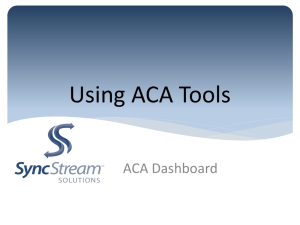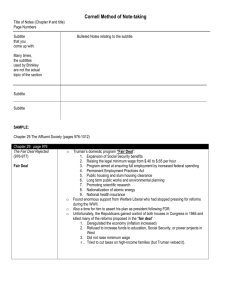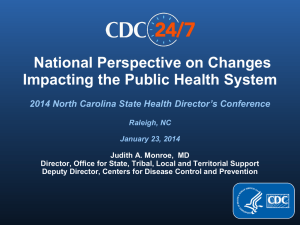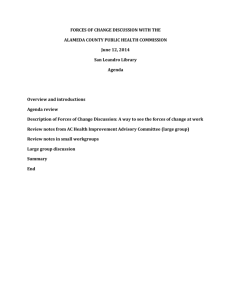The Next Generation of the FLEX Program: Post PPACA
advertisement
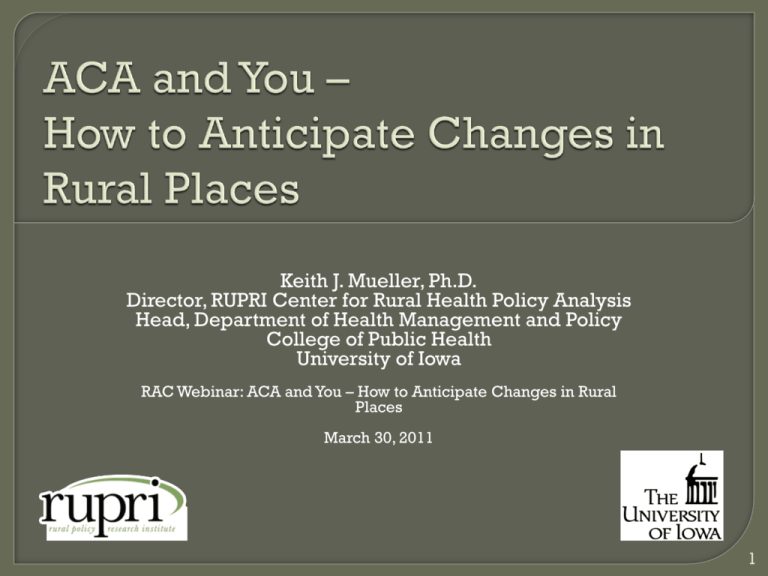
Keith J. Mueller, Ph.D. Director, RUPRI Center for Rural Health Policy Analysis Head, Department of Health Management and Policy College of Public Health University of Iowa RAC Webinar: ACA and You – How to Anticipate Changes in Rural Places March 30, 2011 1 There will be change in Access Cost Quality Healthy communities 2 Increased number of people seeking primary care services Pressure to contain cost increases Models to integrate services Accountability for measurable improvement in quality 3 E-health Optimal use of all persons in the workforce (patient navigators, extension model) To all services including public health, healthy communities 4 Focus first on basic needs Emergency room care and transfers 24/7 pharmacy order review Consultation, including radiology 5 E-ICU Mental/behavioral health Dermatology Other 6 The Patient-Centered Medical Home model Non-physician primary care providers Extenders of care emanating elsewhere 7 Integrated with clinical care, part of PCMH Recommended for Accountable Care Organizations Independent community-based providers Supported in title IV and V of the ACA 8 Show me the way! Integrated care saves money? Care management saves money? If savings are from different patterns and levels of use, can the system “right size?” 9 School environment Worksite wellness Individualized wellness 10 Reducing disparities Active living and nutritious foods Healthy aging benefits targeting 55-64 years of age 11 A value-based approach A results orientation Individual state of well-being Population health – plan and community 12 Hospital value-based purchasing program, including a demonstration program for CAHs Physician quality reporting system VBP program for SNFs and home health agencies VBP modifier under physician fee schedule 13 Uses both achievement and improvement benchmarks/measures Will need to be vigilant regarding measures that “reflect the level of care in the most important areas of services and measures for that provider” Weight clinical process measures at 70% and patient experience at 30% 14 Quality measure development - Outcomes and function status - Management and coordination across episodes and care transitions - Patient-centeredness 15 System Change Drivers are toward integrated systems of care, including quality measures applied to patient transfers Broadening to include more emphasis on care in the home – Section 3024 establishes an Independence at Home Medical Practice category, serving at least 200 applicable beneficiaries and using electronic health information systems, remote monitoring, and mobile diagnostic technology Community health teams, patient centered-medical homes, health teams (Section 3502) Regionalized systems for emergency care 16 Better Care: improve the overall quality, by making health care more patient-centered, reliable, accessible, and safe Healthy People and Communities: improve the health of the U.S. population by supporting proven interventions to address behavioral, social, and environmental determinants of health in addition to delivering higher-quality care Affordable Care: Reduce the cost of quality health care for individuals, families, employers, and government 17 1. 2. 3. 4. Making care safer by reducing harm caused in the delivery of care Ensuring that each person and family is engaged as partners in their care Promoting effective communication and coordination of care Promoting the most effective prevention and treatment practices for the leading causes of mortality, starting with cardiovascular disease 18 5. Working with communities to promote wide use of best practices to enable healthy living 6. Making quality care more affordable for individuals, families, employers, and governments by developing and spreading new health care delivery models 19 ACA Opportunities: Title IV, Subtitle A The new National Prevention, Health Promotion and Public Health Council The new Advisory Group on Prevention, Health Promotion, and Integrative Public Health Use of a new Prevention and Public Health Fund CDC to convene an independent Community Preventive Services Task force 20 ACA Opportunities: Title IV, Subtitle A, continued… Planning and implementation of a national public-private partnership for a prevention and health promotion outreach and education campaign to raise public awareness of health improvement across the life span Establish and implement a national sciencebased media campaign on health promotion and disease prevention 21 ACA Opportunities: Title IV, subtitle B School-based health centers Medicare coverage of personalized prevention plan services 22 ACA Opportunities: Title IV, Subtitle C CDC grants for implementation, evaluation, and dissemination of evidence-based community preventive health activities in order to reduce chronic disease rates, prevent the development of secondary conditions, address health disparities, and develop a stronger evidence base of effective prevention programming Grants to provide public health community interventions, screenings, and clinical referrals for persons between ages 55 and 64 23 ACA Opportunities: Title IV, Subtitle D Funding for research in the area of public health services and systems Employer based wellness assisted Epidemiology and Laboratory Capacity Grant Program Funds to carry out childhood obesity demonstration projects 24 The RUPRI Center for Rural Health Policy Analysis http://cph.uiowa.edu/rupri The RUPRI Health Panel http://www.rupri.org 25 Dr. Keith J. Mueller Department of Health Management and Policy College of Public Health 200 Hawkins Drive, E203 GH Iowa City, IA 52242 319-384-5121 keith-mueller@uiowa.edu 26
